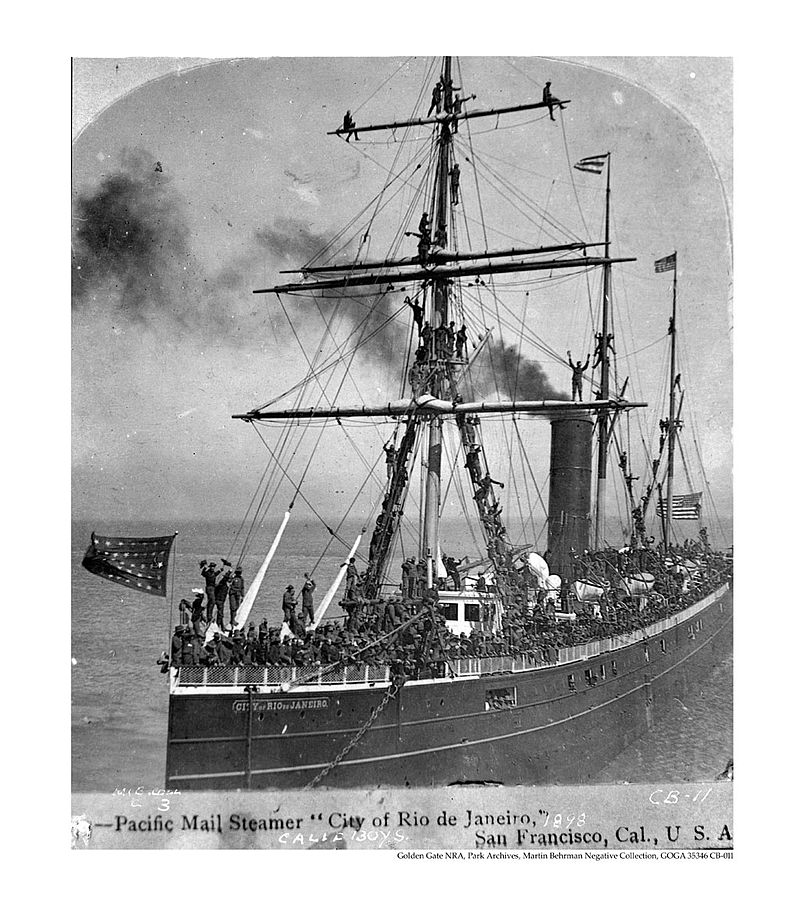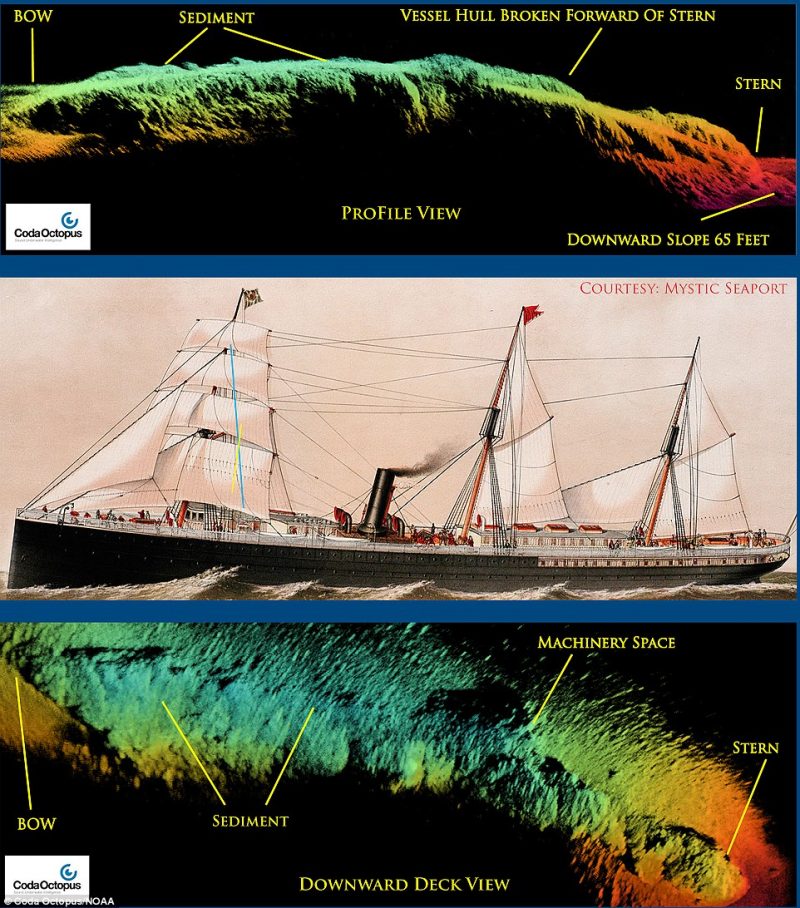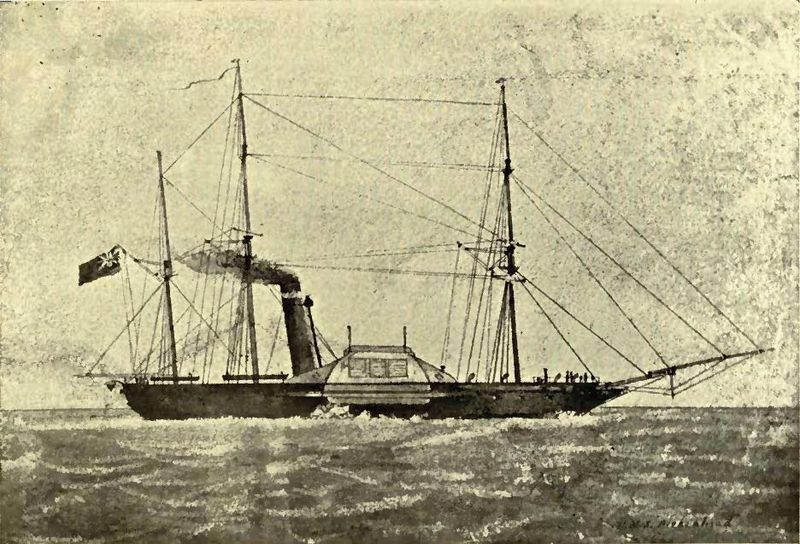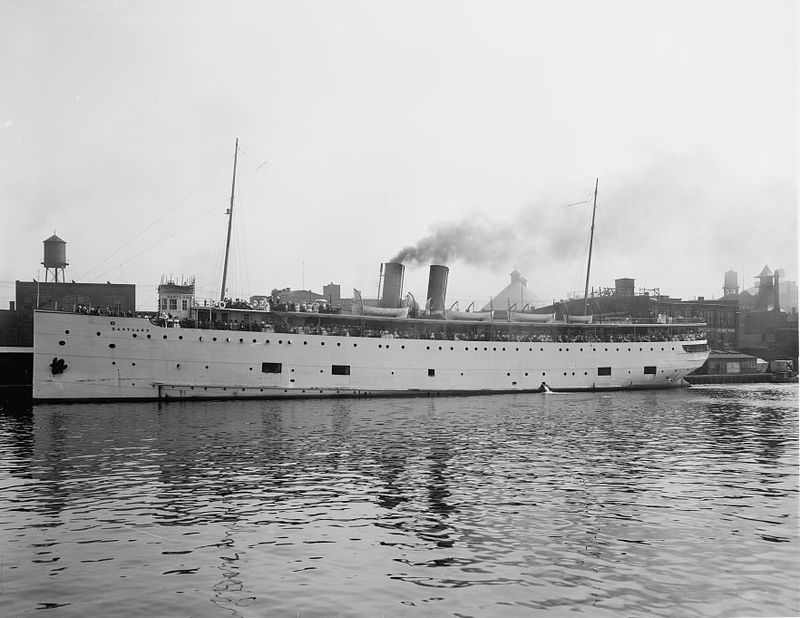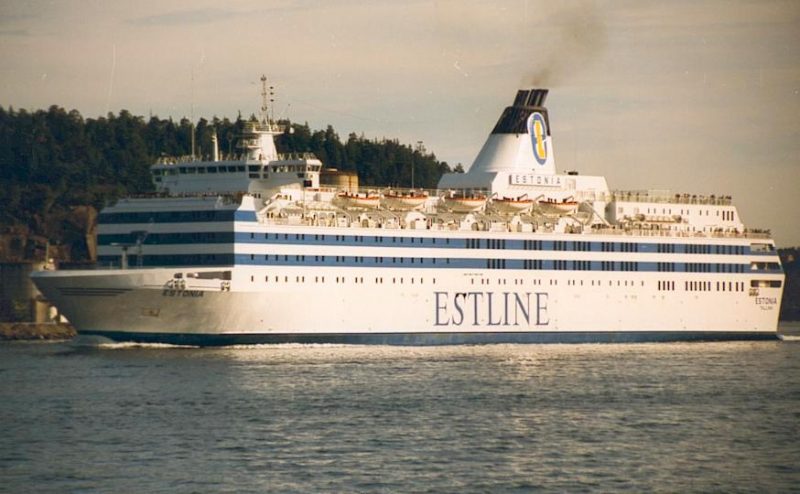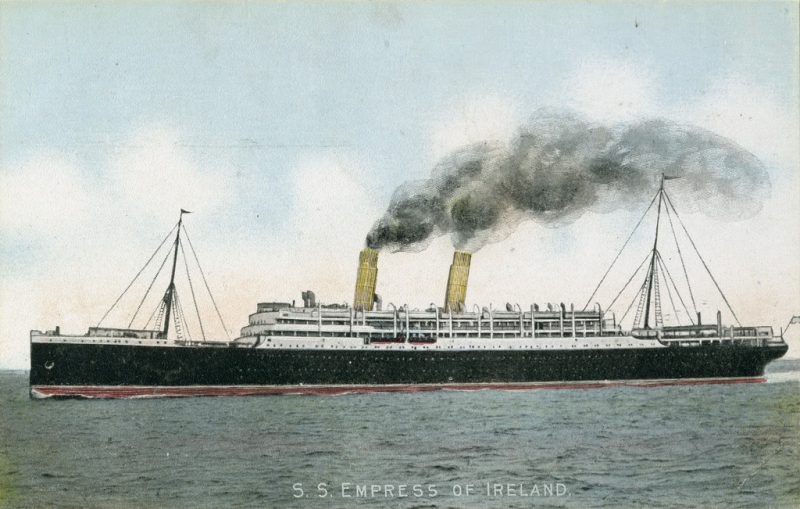The Titanic sinking was one of the most noted in history. However, many people do not realize that another ship’s fate proved to be just as deadly. Nearly 115 years ago there was a boat that sunk in San Francisco, and some consider this horrible disaster one of the worst in history.
On February 22, 1901, the SS City of Rio de Janeiro struck a sharp rock while sailing through a foggy morning. This happened near the Golden Gate Bridge, and the ship sank almost immediately, killing 128 out of the 210 passengers and crew members.
For decades that ship was left alone, but in 2014, divers located the wreck. For a while, there was a myth that the large ship contained treasure. With the photos taken and further investigation done, that theory was put to rest. Many thought the SS City of Rio de Janeiro was full of silver treasure, but what was documented as “Chinese silver” was in fact just bars of tin.
James Delgado, director of maritime heritage for NOAA’s Office of National Marine Sanctuaries, says that now that they have found the wreckage they hope to delve a bit deeper into the history of these maritime disasters. He is excited to see what technology can do to protect the history hidden with the ships.
Delgado explained that the wreckage will be tough to view under the water because the wreck is completely broken and filled with mud. He described it as a “sealed grave”, and states that the main shipping lanes in which it’s located are dangerous waters for diving. Thanks go to the Hibbard Inshore and Bay Marine Services that donated a research vessel and crew, along with the sonar equipment by Coda Octopus.
It is believed that the wreck was first found during the 1980s, but its exact location was unknown for a long time because the coordinates for it did not match any of those in NOAA documents. Still, this wreck was one of the more important wrecks in history. The wreckage is currently under 287 feet of water, with a majority of it buried in mud.
The ship was built by John Roach & Son in Chester, Pennsylvania in 1878. It was used to transport passengers and cargo between Asia and San Francisco. After striking the Fort Point rock, the ship was pushed by the tide back from the bridge and off the rocks. Since the bulkheads were not watertight, the ship flooded fast, sinking in just 10 minutes.
A majority of the passengers were Chinese and Japanese emigrants who were fast asleep in their cabins and did not have a chance of escaping. The captain at the time of the sinking was Captain William Ward. He went down with the ship and his body was only identified after a rib cage with his watch tangled up inside it washed ashore nearly 17 months later. This is considered one of the highest losses of life at the Golden Gate Bridge. According to records, there have been over 100 shipwrecks off the coast of the Golden Gate.
Some other historic shipwreck include:
- MARY ROSE – death toll = 400
The Mary Rose was an English Tudor carrack warship and was known as one of the first ships to fire cannons. The boat was one of the earliest purpose-built warships to serve in the Royal Navy. In 1545, King Francis I of France decided to launch an invasion of England with 30,000 soldiers in 200 ships. The English had about 80 ships and only 12,000 men to fight. On July 20, 1545, a breeze caught the Mary Rose and she capsized and sank in the midst of battle. Nearly all crew members died, but there were 35 survivors of the wreck. Many believe that when she made a sharp turn to avoid a volley, she turned too sharply, which made the ship heel and submerge the open gun ports. The worst part is that many of the men fighting did not know how to swim, making the death toll even greater.
- HMS BIRKENHEAD – death toll = 460
The HMS Birkenhead, also known as the HM Troopship Birkenhead, was one of the first iron-hulled ships built solely for the Royal Navy. It was actually built as frigate, but was soon converted to a troopship. On February 26, 1852, the ship was transporting the 73rd Regiment of Foot to Algoa Bay. The boat was wrecked at Gansbaai near Cape Town, South Africa. Sadly, there were not enough lifeboats for all of the passengers. While the soldiers stayed aboard, all women and children escaped in the lifeboats. Only 193 of the 643 people survived.
- SS EASTLAND – death toll = 845
This ship was a Chicago-based passenger ship which was also used as a tour boat. On July 24, 1915, the Eastland and two other Great Lakes passenger steamers were taking employees from the Western Electric Company on a picnic to Michigan City, Indiana. A new law had just been passed by Woodrow Wilson to ensure enough lifeboats on vessels; there were so many lifeboats on Eastland that the ship was top-heavy and unstable. On that morning, the ship loaded nearly 2,752 passengers. Too many people rushed to the port side at once and caused the ship’s weight to become uneven, making the ship roll completely on its side. It ended up resting on the river bottom only 20 feet below the surface. Since the ship was so packed, many passengers were in the lower levels, trapped in the muck. Some people were even crushed by furniture as the ship went down, and many young women and children died in the disaster.
- MS ESTONIA – death toll = 852
This ship was a cruise ferry built in 1979 at a German shipyard in Papenburg. It was September 28, 1994 when the ship was crossing the Baltic Sea en route to Sweden. The boat was carrying 989 passengers and crew. There was a strange sound of metal against metal heard just a the ship was outside of the Turku archipelago. Doing the right thing, the crew inspected the bow, but did not see any damage. Shortly after the inspection, the visor separated, which proved to be fatal. By that point the crew and passengers were told to get up on deck to man the lifeboats. However, to make matters worse, the boat lost power and was unable to inform international ports of their whereabouts. This ended up stalling the rescue mission, and only 137 people were saved.
- RMS EMPRESS OF IRELAND – death toll = 1,012
This ship was built in 1905 and 1906 by Fairfield Shipbuilding and Engineering in Scotland. It was being built for the Canadian Pacific Steamships. It departed for Quebec City on May 28, 1914 with 1,477 passengers and crew. The ship had a new captain and was traveling through fog on that day. A Norwegian collier Storstand ended up crashing into the Empress of Ireland. The Storstand did not sink, but the Empress suffered great damage to the starboard side. It ended up shipping water, rolling over, and sinking within 14 minutes. There were only 465 survivors; four of them were children and 42 were women.

